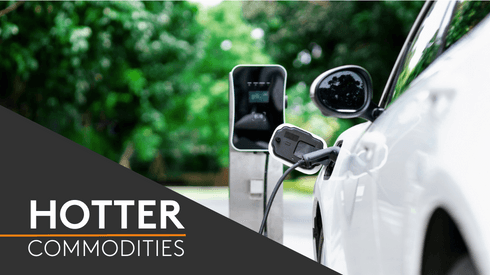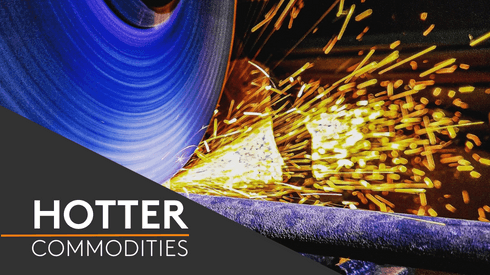The longer-than-usual periods for these tenders reflect copper miners’ eagerness to capitalize on the current record-low copper concentrate treatment and refining charges (TC/RCs), market participants said on Friday May 10.
“There are some big supply volumes [in several tenders] ranging between 50,000 and 100,000 tonnes of units for 2025 and 2026, and some are even selling tonnages for 2027,” one source said.
One miner was said to be selling tonnage as far ahead as 2028, with some smaller and medium-sized miners selling more than one-third of their production for those years.
“We were inundated with offers. People were very aggressive with their bids,” one miner told Fastmarkets.
“Opportunities like this don’t last long,” the miner added, noting that it was taking advantage of the current situation.
“The current TC number is extremely low, and unsustainable,” a second source said, “so miners are incentivized to sell forward, to lock-in profits from record-low TC figures.”
Industry sources have told Fastmarkets that a number of market participants have offered steep discounts for years up to 2026 and beyond, on whatever each separate year’s long-term benchmark level is. Fastmarkets has heard that contracts have been signed at less than 50% of the benchmark as far out as 2027.
For tonnages in 2025, Fastmarkets has learned that supply has been agreed with TCs in minus-double-digits (a discount of 10% or more) for clean material and at low-positive-double-digits for complex arsenic-containing concentrates for 2025.
Fastmarkets heard of multiple deals signed at negative TCs for 2025, with market sources saying that traders expected concentrate supply to be tight for a long time.
“It seems inevitable,” one trader said.
Traders were willing to pay such aggressive levels, market sources said, in the expectation of continued tightness. This meant that they will expect low TCs next year, but also that procuring concentrates may be a challenge.
Multiple sources pointed out to Fastmarkets that the quality of some of the material being traded made it suitable for blending, either because they are complex or because they are very clean. They also said that some traders may be purchasing material for the coming years with the intention of using it in blending operations.
That last point raises further questions about what the copper concentrate benchmark will look like in the coming years, with increasing amounts of tonnage already spoken for, either at sharp discounts to the benchmark or at already agreed low levels.
Copper concentrates TC/RCs are discounts paid by miners for the ore to be processed into refined metal, and these discounts typically fall when supply becomes tighter.
Fastmarkets’ benchmark copper concentrate TC/RC index fell into negative territory on April 26, the first time the index had traded as a negative number in records going back to 2013.
The most recent calculation of the copper concentrates TC index, cif Asia Pacific, was a discount of $2.50 per tonne on May 3. This compared with a discount of $2.60 per tonne a week earlier.
The acute supply tightness started with the unexpected closure of First Quantum’s Cobre Panama copper mine in November 2023. The resulting supply deficit persisted, market participants said, because of the greater demand for copper concentrates from copper smelters, against limited production growth at copper mines. But the market expected negative TCs to be unsustainable in the long run.
Traders bid very aggressively to win tenders issued by miners, in attempts to secure copper concentrate supplies in a deficit market, and the current situation has significantly intensified market competition.
“Traders must bid at very aggressive numbers to win [tenders], and basically all tenders [are agreed] at negative [figures],” a third source said.
“Things are getting harder now, when you have to book your materials [with TCs] at negative-double-digits but, if you don’t do so, you will lose market share in the coming years,” the third source added. “I think miners are also ‘picky’ about their buyers, to avoid defaulting and any other potential risks.”
This was already happening in the spot copper concentrates market, with suppliers selling their parcels only to big copper smelters, to mitigate the risks of sudden large declines in spot TCs.
“Miners are well aware of the challenges for copper smelters from the current low TC number, especially for those not well covered by long-term supply contracts,” a fourth source said. “They will be exposed to production risks when you can’t afford to buy spot units to meet demand, and they can’t pay bank loans and get new loan credits either. This is a vicious circle.”
But increased supplies of copper scrap recently have allowed some domestic copper smelters in China to adjust their raw materials mix by using more anodes and blister made of copper scrap while reducing the use of copper concentrate.
This will allow domestic refined copper output to be less affected during this year’s maintenance season in the second quarter of the year.
China produced 3.36 million tonnes of refined copper during the first quarter of 2024, up by 10% year on year, according to China’s National Bureau of Statistics.
Want to hear more insights on this market? Subscribe to Fast Forward, your definitive podcast for the critical minerals and battery raw materials markets, today. Your host, Andrea Hotter, will address burning topics in the critical minerals market including the latest trends, market buzz and game-changing technologies that are shaking up the sector. Find out more here or subscribe on Spotify, Apple Podcasts, Amazon Music or wherever you get your podcasts to get the latest episodes when they are released.






